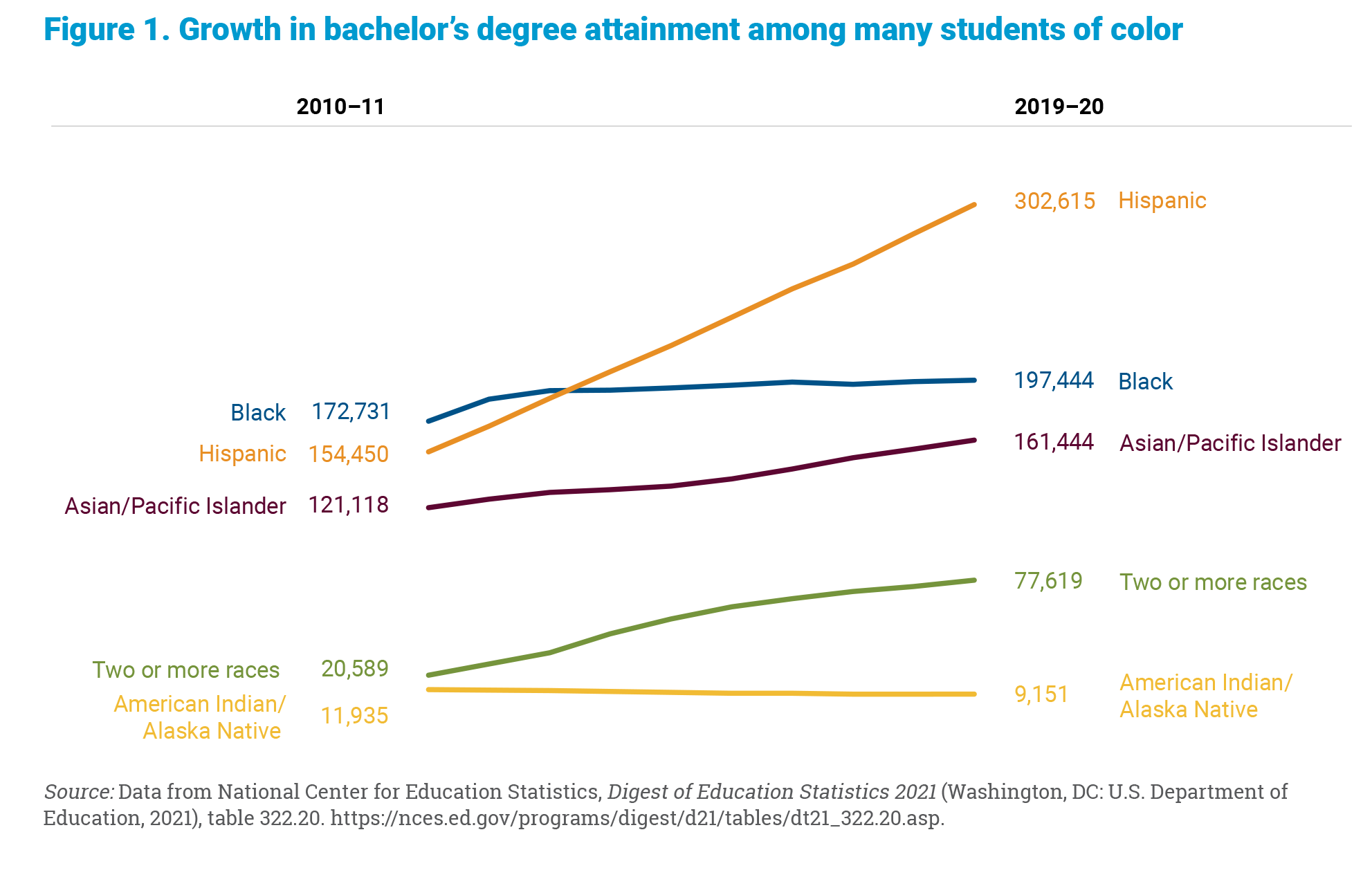Students of Color and Degree Attainment
Section 1 Content
Over two million students will receive college degrees this year, and a record share of them will be students of color. These gains in degree attainment, particularly among Hispanic students, are especially strong in science, technology, engineering, and math (STEM) fields. Though postsecondary education has a long way to go before achieving true racial equity, students of color are succeeding in college like never before.
More students of color are earning bachelors’ degrees
Section 2 Content
Hispanic students have been the largest minority group in higher education since 2012. Over the
past 10 years, this group has seen a substantial growth in degree attainment, with the number of
Hispanic students earning bachelor’s degrees nearly doubling between 2010–11 and 2019–20. By the end of this current decade, the U.S. Department of Education predicts that Hispanic students will make up 21 percent of all enrolled students, about the percentage of the national population that the U.S. Census Bureau expects will identify as Hispanic.
For other groups, including Black and American Indian/Alaska Native students, degree attainment has not seen the same meteoric rise. Black students earn bachelor’s degrees at slightly higher rates than a decade ago, while American Indian/Alaska Native students’ degree attainment has dropped slightly.

Students of color are making strong gains in STEM
Section 3 Content
Students who are Hispanic, Asian/Pacific Islander, or who identify with two or more races have increasingly earned STEM degrees over the past 10 years. The graph below includes degrees and certificates at all levels, from below the associate degree level to doctoral degrees. Hispanic students are earning more degrees and certificates at the bachelor’s level and below, while Asian/ Pacific Islander students are earning more degrees and certificates at the bachelor’s and master’s
degree levels. As in the previous graph, we see a slight decline in the number of STEM degrees earned by American Indian/Alaska Native students.

Section 4 Content
While the representation of students of color in college is growing overall, it is not yet even across racial groups, sectors, or degree levels. ACE’s Race and Ethnicity in Higher Education: A Status Report disaggregates these groups even further and illustrates how to use these data to make postsecondary education more equitable for all students.5
As more students of color enroll in and complete college, policy leaders and institutions also need to give more attention to differences in graduates’ post-college outcomes. Supporters of student loan forgiveness proposals have pointed out that borrowers of color struggle more with repayment because their earnings are lower than those of white borrowers. Policies that are created to improve support for loan repayment, including loan forgiveness, can help students of color if they are coupled with policies intended to decrease the need for student borrowing in the first place. Increasing the representation of students of color in highly selective institutions and at higher degree levels could also help address the racial earnings gap.
Section 5 Content
Facts in Hand is a data-driven series exploring the state of higher education today. Other posts in the series:
Who Is Borrowing for College?